lattice
Lattice
Lattice is a complex shape that can only be shaped with metallic 3D printers, consisting of fine three-dimensional lattices.
By adopting the optimized lattice structure everywhere in the part shape, it leads to improvement in performance.
Weight reduction
It is possible to reduce weight and materials by decreasing the volume with a grid shape.
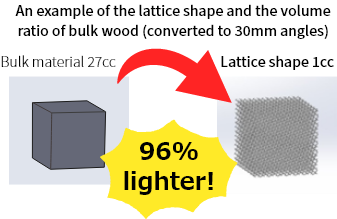
Improvement of air permeability and heat dissipation
Increased surface area improves air permeability and heat dissipation.
Applicable to heat sinks and heat exchangers.
Lattice structural sample
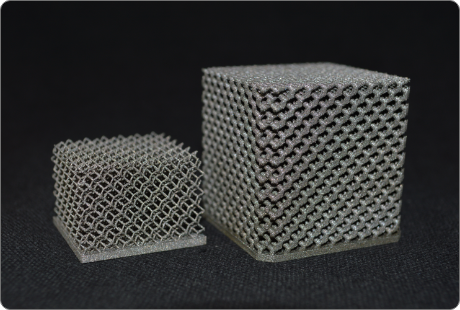
Sample of a brake pedal with a lattice structure built inside
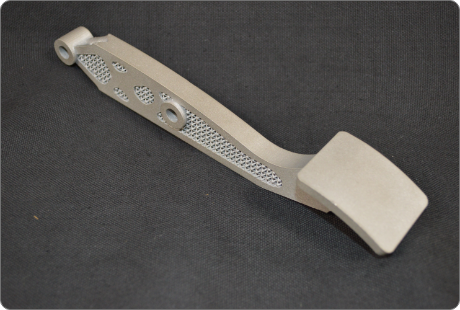
Porous structure
Porous structure
A porous structure with an empty structure of fine holes.
It is shaped with a metallic 3D printer, and is used as one of the construction methods that characterizes the shape by controlling the shape of the porous.
Because it will allow gas to pass through and increase the surface area, it will allow you to add breathability, heat release, biocompatibility, and the function of filtering.
What is the die degassing structure?
By installing porous-shaped degassing parts in the product and runner sections of dies, it is possible to improve molding defects caused by gas.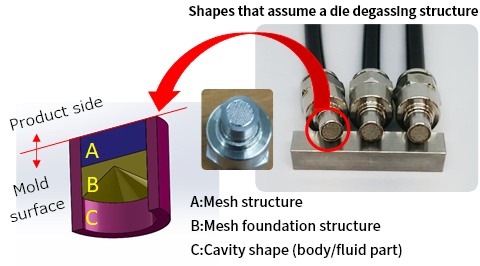
Fine modeling
Microfabrication
Thin-walled machining
Thin-walled machining is possible under stable laser conditions and molding environments.
Prototypes can be manufactured without dies, such as sheet metal parts that require press working, which leads to evaluation and development in a short period of time.
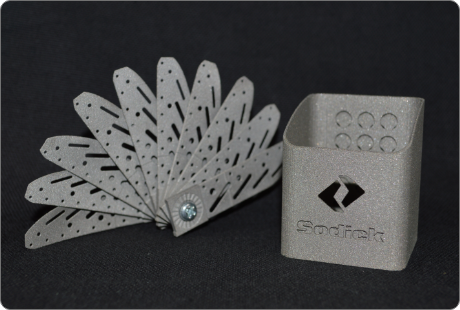
Fine hole machining
3D printers can produce a series of small holes in the interior of the product as it is being formed.
The ability to manufacture without dividing the part not only simplifies the process, but also increases the strength and reliability of the part through integrated formation.
It also eliminates the need to attach divided parts together, thereby shortening the process and reducing costs.
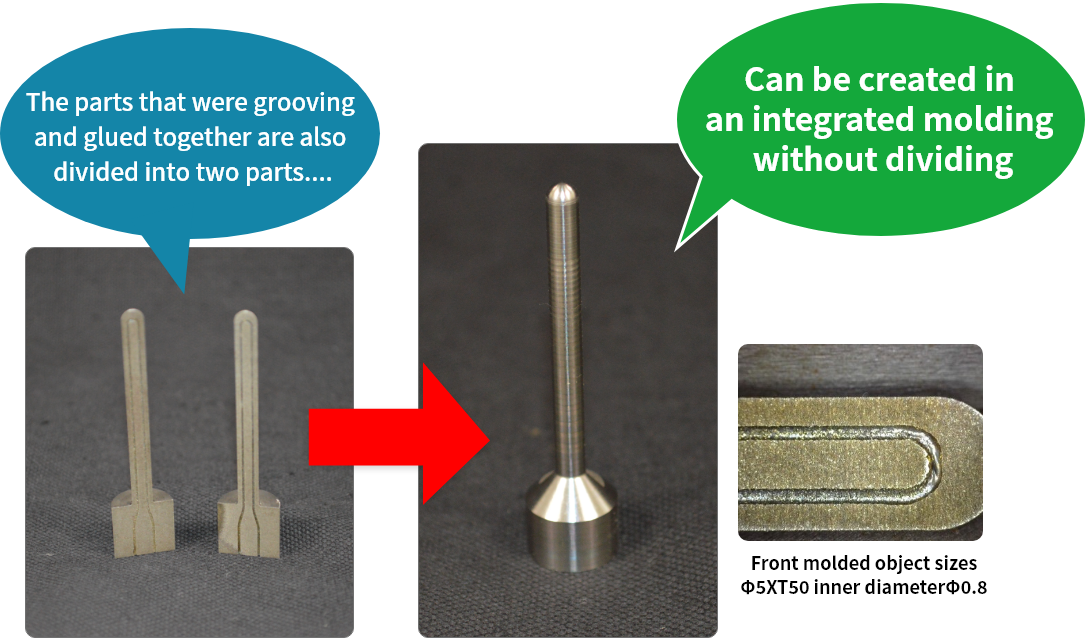
* Samples with improved flow rate properties by passing fluid-polishing after shaping small-diameter holes with metallic 3D printers.
(Fluid polishing was conducted by Argo Vision Technologies, Inc.)
Hollow structure
Hollow structure
The complex hollowed-out structures are shaped because they are metallic 3D printers that are extremely difficult with conventional construction methods.
In addition to being lighter, designs with a larger surface area can also provide functions such as improved heat dissipation and heat transfer.
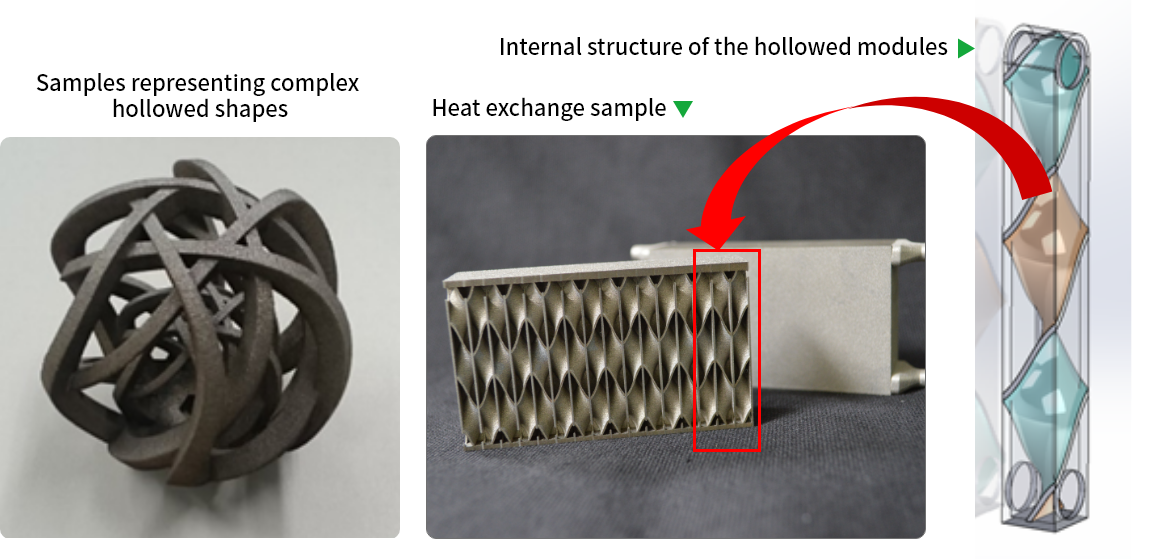
gauge
Forming utilization gauge
The molding know-how of metallic 3D printers is condensed into one gauge.
Sodick has cultivated the performance upgrading of machines and the skill upgrading of processing technology to enable more stable shaping.
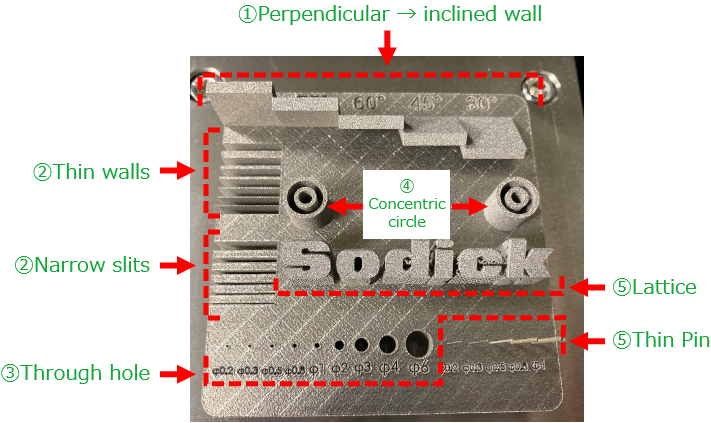
External size: 150 x 150 x h40 mm
(1) Perpendicular → inclined wall
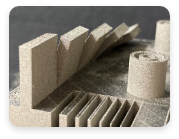
The more inclined the wall is, the more difficult it is to shape it by penetrating the laser, but it is possible to shape an inclined wall with stable surface quality on the back surface.
(2) Thin walls and narrow slits
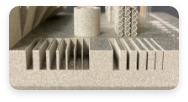
Stable laser conditions and molding environments enable thin walls and narrow slits.
(3) Through hole

The L-shaped through hole, which connects the horizontal and vertical holes, can be applied to the internal cooling water pipe of the mold. The 0 o'clock position of the horizontal hole is the most unstable molding environment, but advanced laser control enables a clean finish.
(4) Concentric circle
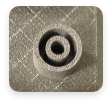
Excellent laser control ensures accurate concentric shaping.
(5) Lattice Thin Pin
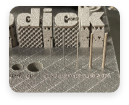
It uses a support structure with a lattice (mesh) shape, enabling high-quality top plate forming along with weight reduction. In addition, high-precision laser control and stable output enabled ultra-fine pin shaping.